Have you ever heard the mystical call of sacred Varanasi, whispering through the winds, inviting you on a journey to visit Varanasi not just through narrow lanes, but through time itself?
Welcome to Varanasi, or as it’s affectionately known, Kashi or Benares – the city where even the stones tell stories and the Ganges hum ancient hymns. Sacred Varanasi is the call that pilgrims hear in their quest for spiritual peace. Also known as Kashi or Benares, this is a city that seems to transcend time. Varanasi is a living testament to India’s ancient cultural and spiritual heritage.
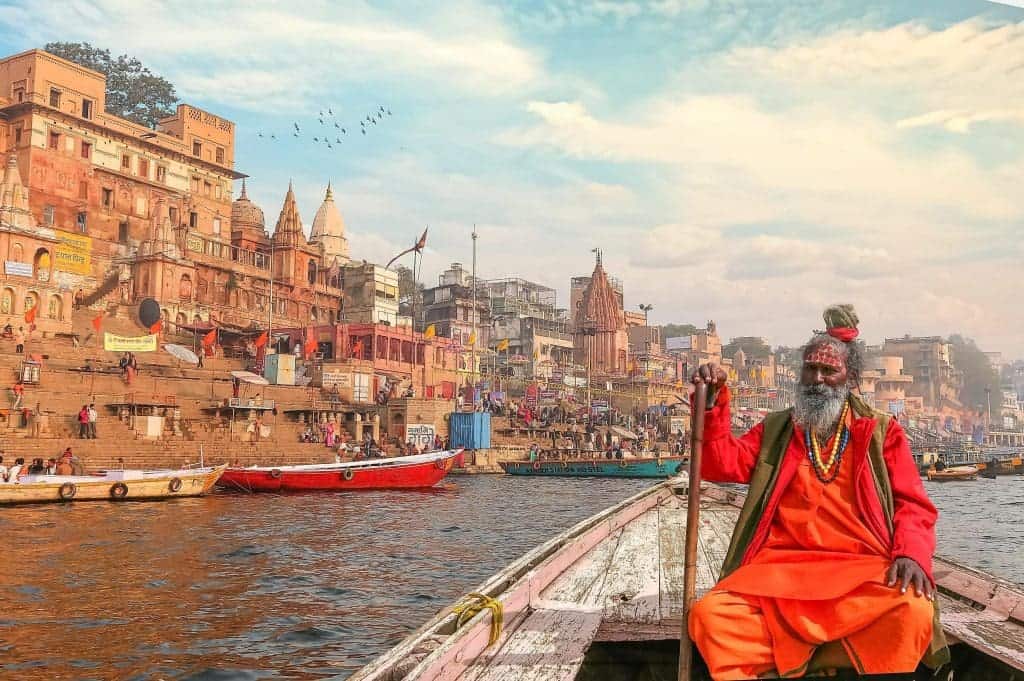
In Varanasi, history doesn’t just whisper; it chats, laughs, and sometimes sings hymns in opera at the top of its lungs. It’s a place where the past and the present don’t just meet; they sit down for a cup of chai together. This city is a living, breathing museum of India’s spiritual and cultural heritage, but don’t expect dusty artefacts – here, history is alive and knocking at your door!
So, pack your bags (and maybe a time machine) for a journey to Varanasi, where every corner has a tale to tell, every alley holds a secret, and the quest for spiritual peace is more colourful than a festival celebration. Whether you’re a pilgrim, a history buff, or just someone looking for a chat with a wise sadhu, Varanasi’s timeless charm is ready to enchant you. Remember, in Varanasi, you don’t just take a trip; you embark on an odyssey – one that promises to be as enlightening as it is colourful!
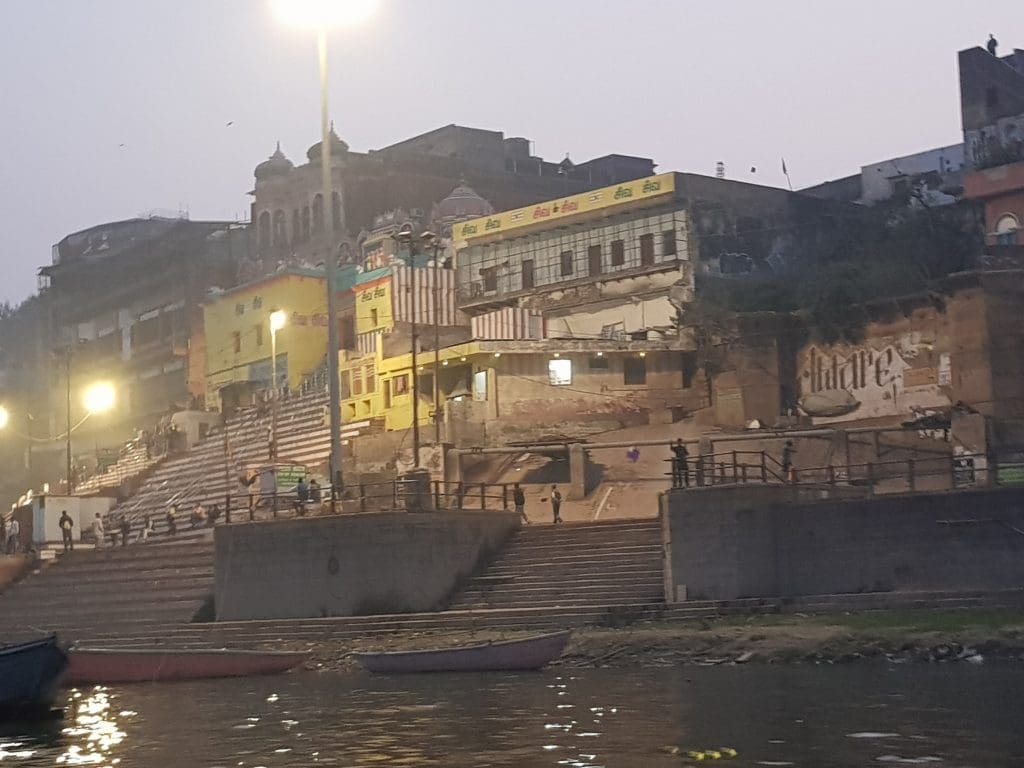
Considered one of the oldest continuously inhabited cities in the world, Varanasi is a melting pot of myths, legends, and spiritual marvels. This ancient city holds profound religious significance and timeless spirituality and beckons millions of visitors each year. Nestled on the banks of the sacred Ganges River, it’s a place where the ancient and the modern, the temporal and the eternal intersect.
Unearthing Ancient Stories
Kashi is a city that seems to transcend time and is a living testament to India’s ancient cultural and spiritual heritage. Varanasi isn’t just rich in legend; it’s a goldmine of archaeological treasures. The city’s history can be traced back through layers of ancient ruins and excavations. These sites reveal a continuous human habitation dating back thousands of years.
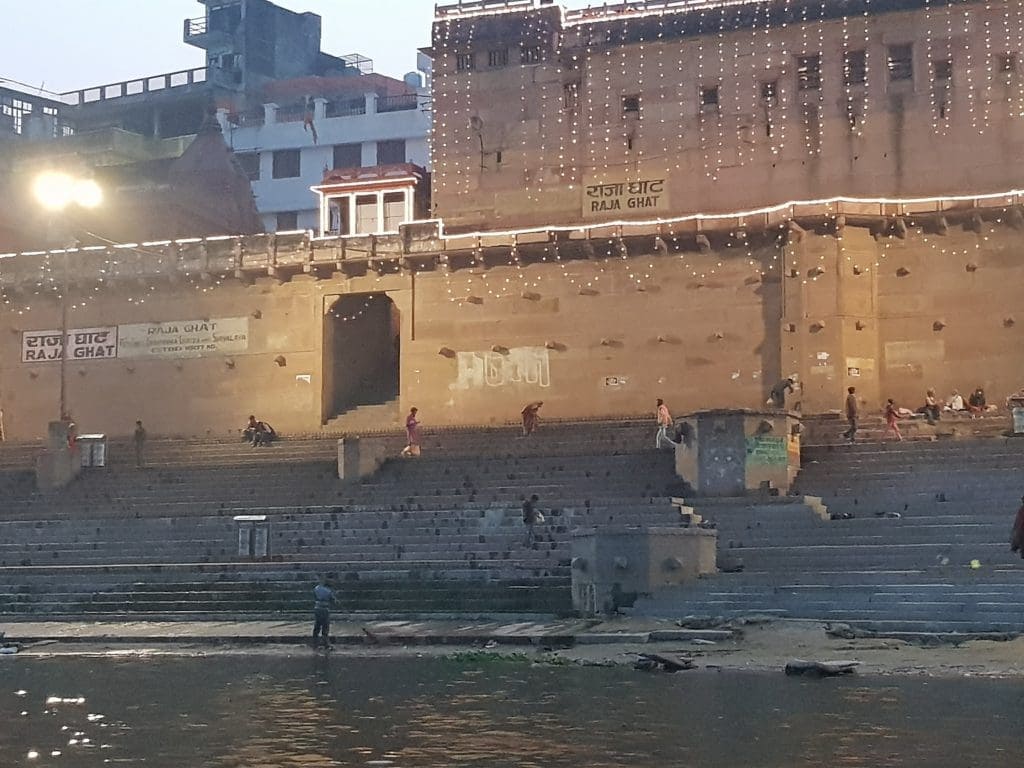
Archaeological discoveries made in the Kashi-Rajghat area indicate that the city was settled around the 9th century BC. The archaeological findings here range from ancient temples submerged in the Ganges to residential structures, all of which provide a fascinating glimpse into the lives of ancient civilizations.
The Essence of Varanasi
At the core of Varanasi’s spiritual identity is the belief that it is the abode of Lord Shiva, one of Hinduism’s principal deities. According to legends, Varanasi is where the first jyotirlinga, the fiery pillar of light by which Shiva manifested his supremacy over other gods, broke through the earth’s crust and reached the heavens. This makes Varanasi an exceptionally sacred site.
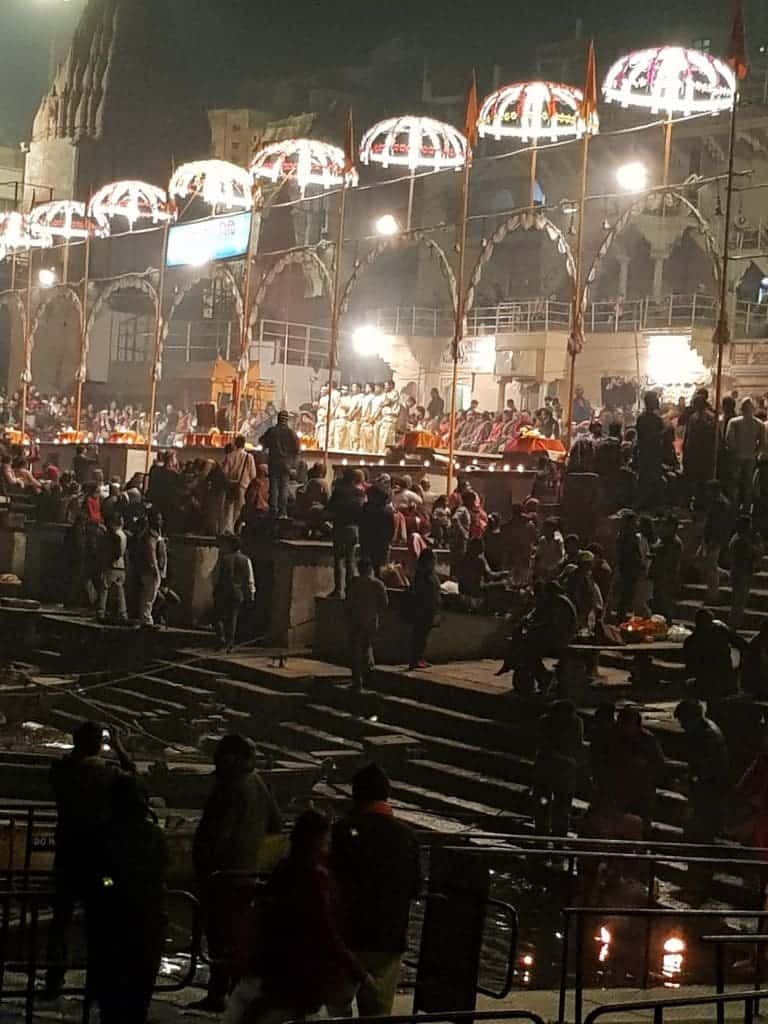
Hindus hold a deep belief that Varanasi is a sacred city where anyone, regardless of their past actions, can achieve ‘Moksha,’ which means liberation or release from the cycle of rebirth. The belief is that spending the last part of their lives in Varanasi brings spiritual liberation and that any creature that dies here is blessed with ‘Moksha.’ According to Hindu beliefs, even if the whole world were to be destroyed, Varanasi would remain untouched. This belief makes Varanasi an extremely important religious site, drawing devotees from around the globe.
To explore Varanasi is to experience a transformation, a journey through the annals of time, where the past and the present coalesce into a mesmerizing tapestry of life and legend.
The city is known for its rich traditional culture and is home to many temples that add to its spiritual significance.
Temples and Shrines: Abodes of the Divine
Varanasi’s landscape is dotted with ancient temples, each narrating a divine saga.
Kashi Vishwanath Temple
Dedicated to Lord Shiva, the temple is one of the twelve Jyotirlingas and a must-visit for any pilgrim. The temple’s golden spire symbolizes Varanasi’s enduring spiritual significance. Also known as the Golden Temple of Varanasi because its three domes are made of pure gold, Lord Shiva is worshipped here as ‘Vishwanath’ or ‘Vishveshwara,’ which means the ruler of the universe.
It is believed that seeing the deity, known as ‘darshan’, cleanses people of their sins and leads them to ‘Moksha’, a state of liberation. Devotees offer ‘panchamrut’ (a mixture of milk, honey, sugar, yoghurt, and ghee), water, and flowers to Lord Vishwanath. The temple conducts five daily rituals, known as ‘Aartis’, for the deity.
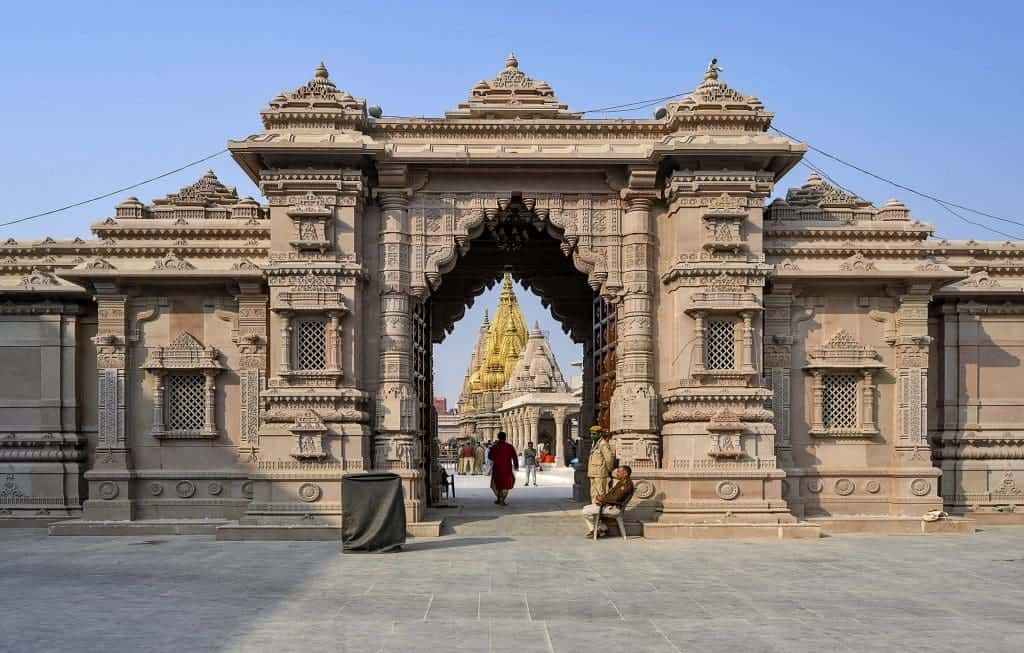
The charm of the temple extends beyond its spiritual importance to its architectural splendour. At the heart of the temple is a beautifully set linga, placed on a silver altar. The Kashi Vishwanath Temple, known for its resilience through destruction and rebuilding, is renowned in Varanasi. Legend has it that making a wish while gazing at the dome will lead to its fulfilment, courtesy of Lord Shiva’s divine grace.
Maa Annapurna Temple
Not far from this temple, on Dashashwamedha Road near Vishwanath Gali, is the temple dedicated to Maa Annapurna, the Goddess of Kashi. She is considered an incarnation of Maa Parvati and is revered as the Goddess of Food or Nourishment, ensuring that her followers never suffer from hunger.
Built-in 1729 by Maratha leader Bajirao Peshwa, the temple’s design reflects the cultural heritage of Varanasi. Its detailed carvings narrate tales of devotion and tradition. Inside, there are two idols of the goddess: one in gold and another in brass. The brass idol is on display all year, but to see the gold idol, you should visit the day before Diwali. Every year after Diwali, the temple celebrates the ‘Annakoot’ festival, which attracts many pilgrims. During this festival, devotees visit the temple in large numbers.
Sankat Mochan Temple
Famous for its association with the monkey god, Hanuman, this temple is a place of solace and belief, where devotees find relief from their troubles. Constructed in the 16th century by the renowned poet Goswami Tulsidas, this temple stands along the Assi River and is among the most visited in Varanasi.
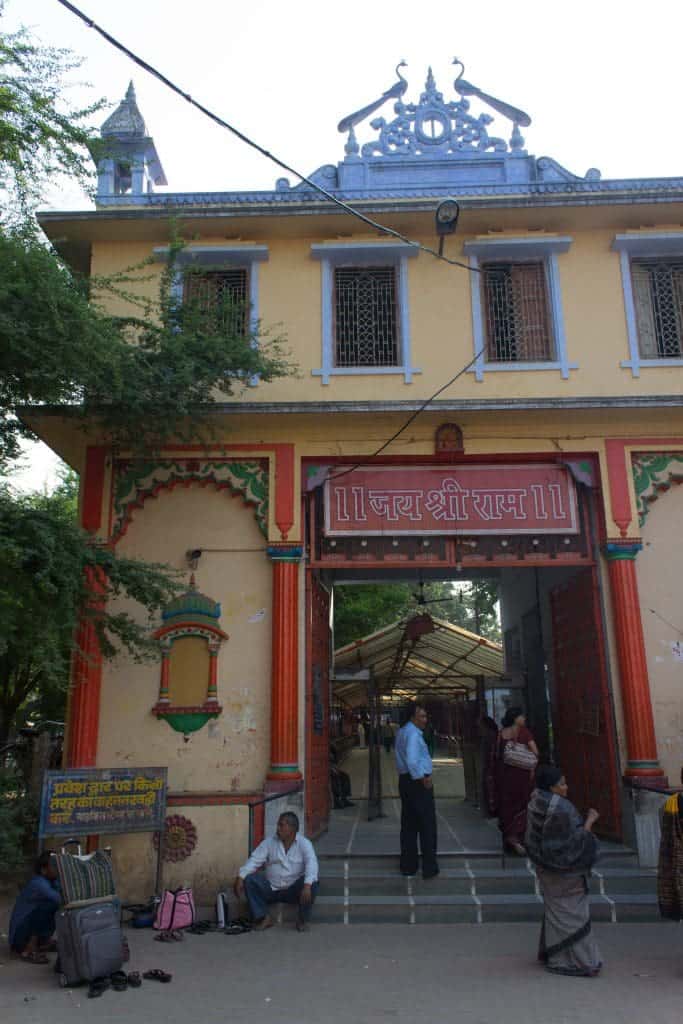
The Sankat Mochan Temple, renowned for its beautiful architecture, is home to the idols of Lord Rama and Lord Shiva. When you enter this holy place, you’ll be welcomed by the melodious recitation of the Hanuman Chalisa. This temple captivates visitors not only with its spiritual atmosphere but also with the breathtaking views it provides.
The Sankata Devi Temple
The Sankata Devi Temple is situated near Sindhia Ghat in Varanasi. In this temple, you’ll find the four-armed idol of Maata Sankata Devi, a revered figure in Hinduism. Flanking her idol are Lord Hanuman and Lord Bhairav, two important deities. Visitors will also notice a large statue of a lion within the temple grounds.
Maata Sankata Devi is known as a powerful goddess who provides solutions and relief. Although prayers and rituals, known as ‘pujas’ and ‘aartis’, are performed daily in her honour, Fridays are considered especially significant for worshipping her. It’s also believed that the Pandavas, famous characters from the Hindu epic Mahabharata, prayed here during their time of exile.
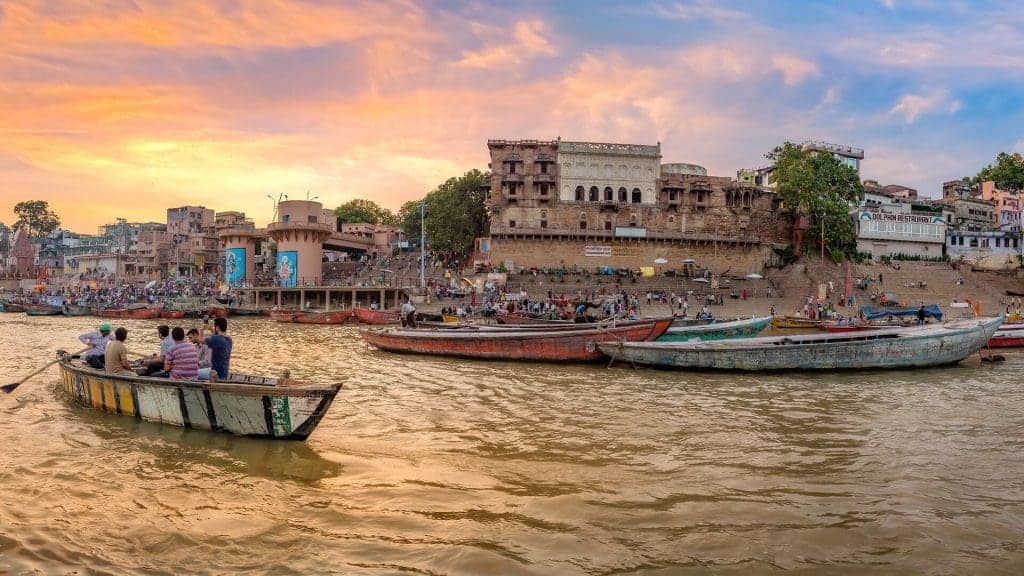
Durga Temple: The Durga Temple, fondly known as the Monkey Temple due to the presence of monkeys around it, is one of the most revered temples in Varanasi. The temple, built in the 18th century, is dedicated to Goddess Durga. Unlike other temples, the idol of Durga here is not human-made but is believed to have appeared on its own (self-manifested). The red colour of the temple is symbolic of the goddess’s fierce form. The Durga Temple showcases the Nagara style of architecture. This temple features multi-tiered spires painted in a striking red colour. Within the temple grounds, there’s a rectangular water tank known as ‘Durga Kund.’ Navratri, a significant festival, is celebrated with great enthusiasm here.
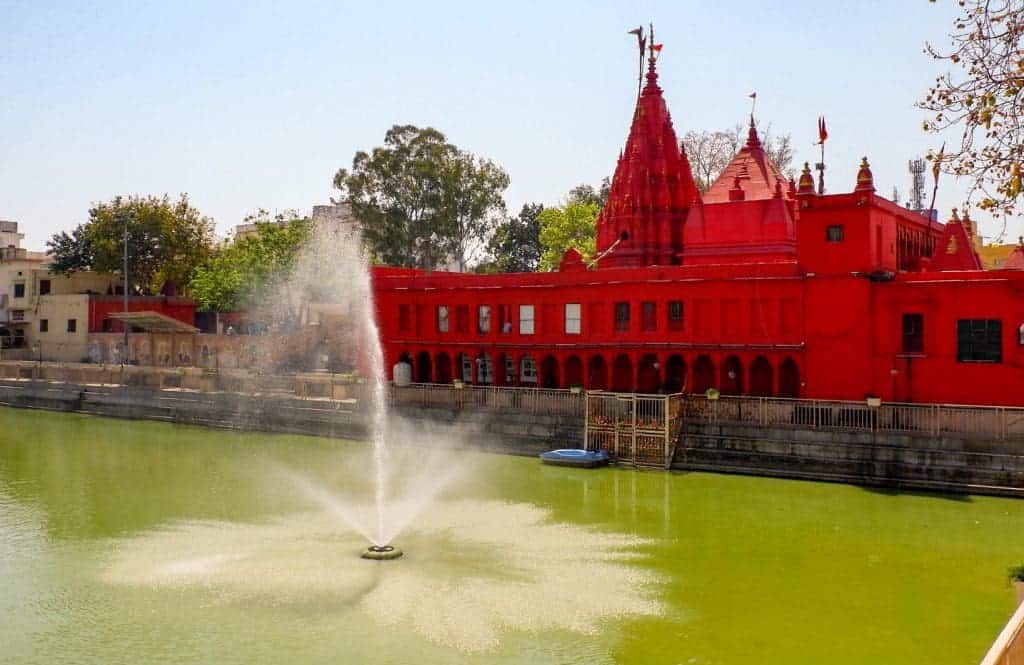
Gyan Vapi Kup, or the Well of Wisdom, is a significant landmark in Varanasi. Situated close to the famous Kashi Vishwanath Temple, this well is steeped in history and legend. It’s believed that the Jyotirlinga of Shiva was hidden in this well to protect it from invaders, symbolizing the unbroken lineage and resilience of the city’s spiritual history.
Ramnagar Fort: Overlooking the Ganges, Ramnagar Fort is a picturesque fortification from the 18th century. This fort is a treasure trove of history, housing a museum rich in artefacts, vintage cars, royal palanquins, and an armoury of swords and old guns. The architecture and the artefacts within the fort tell stories of the city’s royal past and its connection with the rest of India.
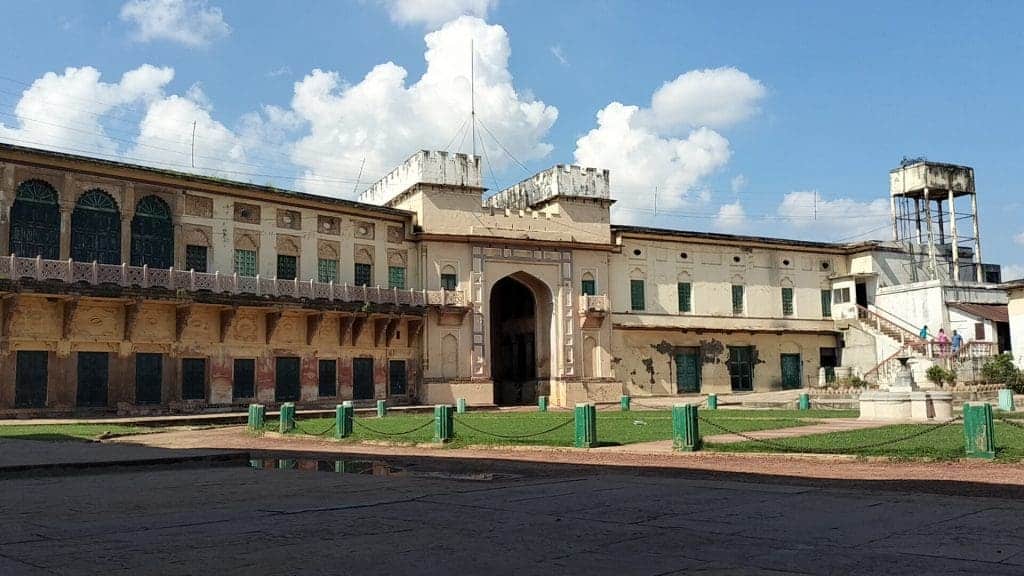
Sarnath: A short distance from Varanasi lies Sarnath, a site of immense Buddhist significance. It is here that Lord Buddha delivered his first sermon after attaining enlightenment. Sarnath is dotted with ancient ruins, stupas, and museums. The Dhamek Stupa and the Ashoka Pillar are landmarks that not only mark this as a pivotal place in Buddha’s journey but also as a testament to the historical depth of the region.
The Ghats: Steps to Spirituality
The Ghats of Varanasi are the city’s soul. These riverfront steps leading to the banks of the Ganges are more than just physical structures; they are spiritual gateways. Each Ghat, with its own story and patron deity, offers a different perspective of the city.
Dasaswamedh Ghat: This is perhaps the most vibrant and lively Ghat. One of Varanasi’s oldest and most sacred ghats, it is renowned for its Ganga Aarti, a vibrant and elaborate fire ceremony held every evening. The ceremony is a sensory experience with the sound of conch shells, bells, brass cymbals, and the rhythmic chanting of mantras. During this ritual, priests, dressed uniformly in kurtas and dhotis, honour the Ganges River with multi-tiered brass lamps.
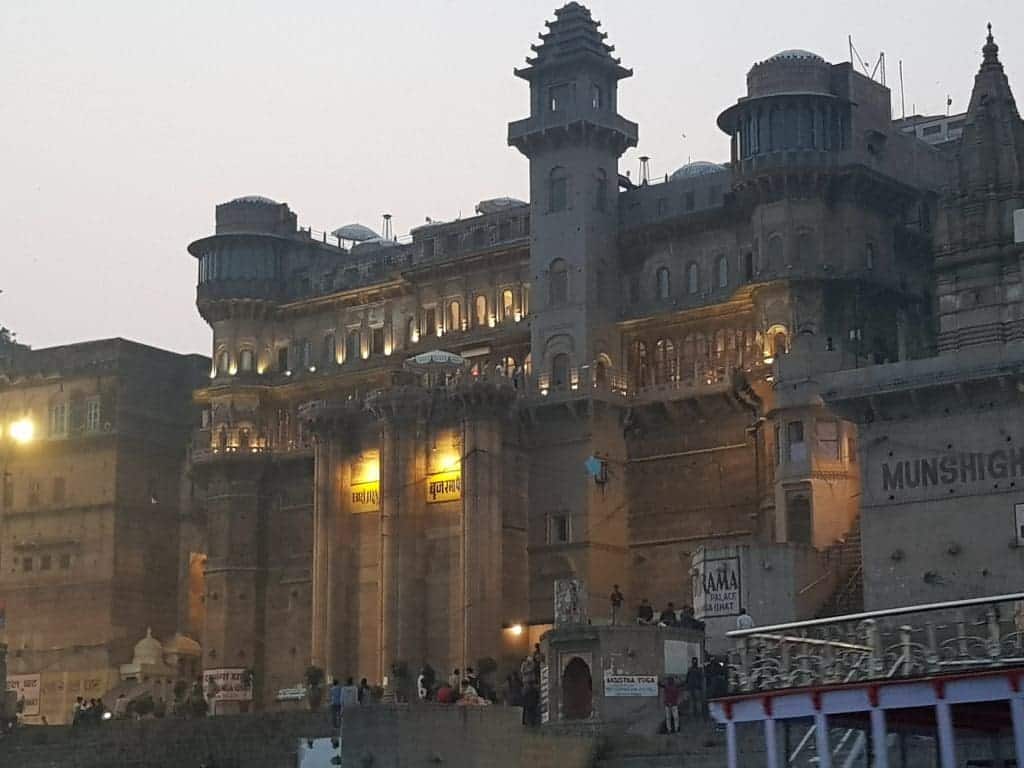
The preparation for the Aarti involves setting up five raised planks, placing an idol of Goddess Ganga, and arranging flowers and incense sticks. The ceremony, lasting about 45 minutes, is conducted by scholars of the Vedas and Upanishads under the leadership of the head priest from the Gangotri Seva Samiti.
Devotees participate by releasing small diyas on leaf platters into the river, paying homage to the sacred Ganges. As daylight fades, the sight of countless lamps floating on the water creates an unforgettable spectacle. This hour-long ritual can be observed from both the ghat and boats anchored along the riverbank.
The name ‘Dashashwamedh’ is linked to a legend where Lord Brahma sacrificed ten horses. Historical records suggest that Bajirao Peshwa I reconstructed the ghat in 1740 AD, and it was later rebuilt by Ahilyabai Holkar, the queen of Indore, in 1774. Located very close to the famous Vishwanath Temple, Dashashwamedh Ghat holds a significant place in the heart of Varanasi.
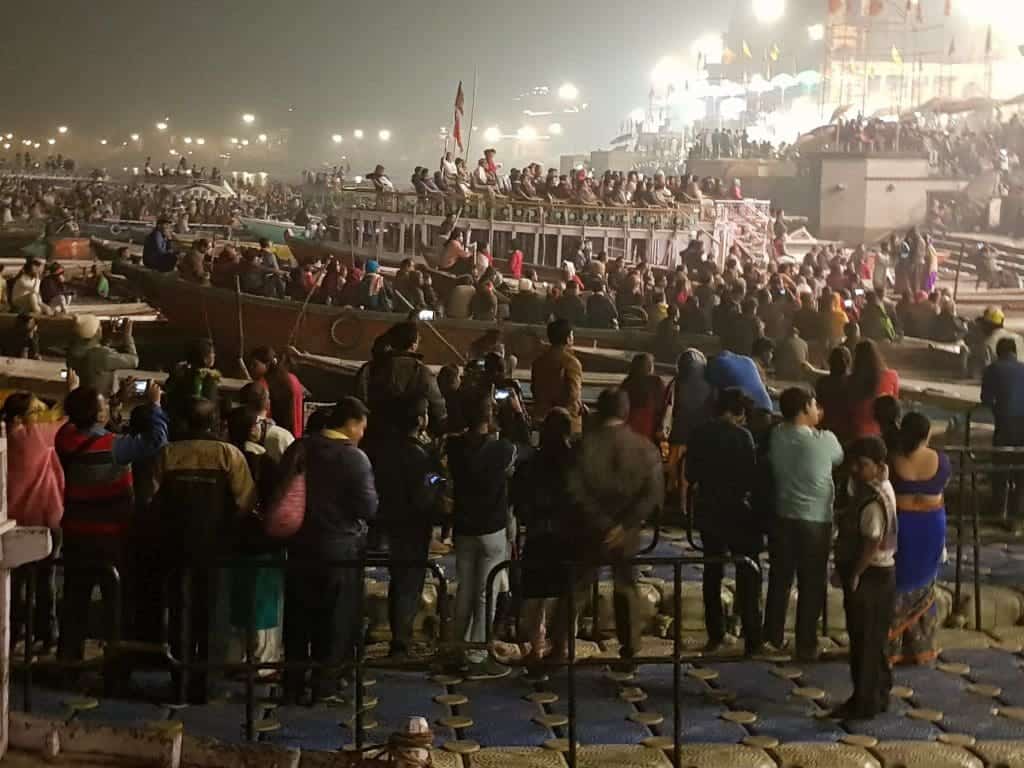
Manikarnika Ghat: It’s the primary cremation Ghat, where the eternal cycle of life and death unfolds before your eyes. Witnessing the cremation rituals here is a profound experience, reflecting the Hindu belief in the transitory nature of physical existence.
One of the most revered and holy ghats for Hindus, it is a prominent site for cremation ceremonies. Situated between Dashashwamedh Ghat and Scindia Ghat, it holds deep spiritual significance. Nearby, there is a pond believed to have been created by Lord Vishnu to provide a bathing place for Lord Shiva and Goddess Shakti.
Close to this pond is a footprint, thought to be Lord Vishnu’s, left during his meditation in Varanasi. Ascending the steps of the ghat, visitors come across the famed Manikarnika well. According to legend, Goddess Parvati once dropped her earring here, and Lord Shiva, in his search for it, dug a hole that eventually became this well, filled with his sweat.
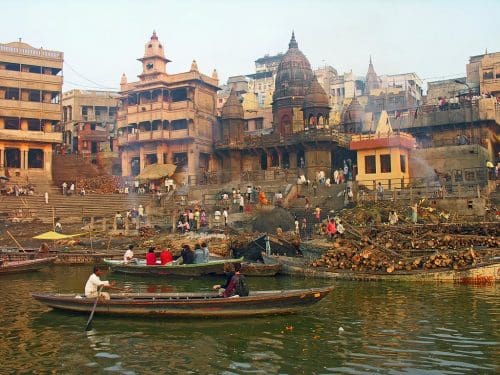
Historically referenced in texts dating back to the 5th century, Manikarnika Ghat is intertwined with the story of Goddess Shakti. It is believed that after Shakti self-immolated at her father’s yagya (fire ritual), Lord Shiva, overwhelmed with grief, carried her body across the universe. To prevent his dance of cosmic destruction (tandava) from annihilating everything, Lord Vishnu dismembered Shakti’s body with his chakra. The spot where her earring fell is known today as Manikarnika.
Assi Ghat: Known for its morning and evening rituals, Assi Ghat is where pilgrims gather to pay homage to Lord Shiva by taking a dip in the holy Ganges. Visitors come to worship a Shiva lingam placed under a peepal tree. The evening ‘arti’, a sacred fire ceremony, is a mesmerizing experience here with mantras chanted, conches blown, and palpable spiritual energy in the air. This ghat is also the starting point for boat rides and is a favoured place for early-morning yoga and devotional music sessions.
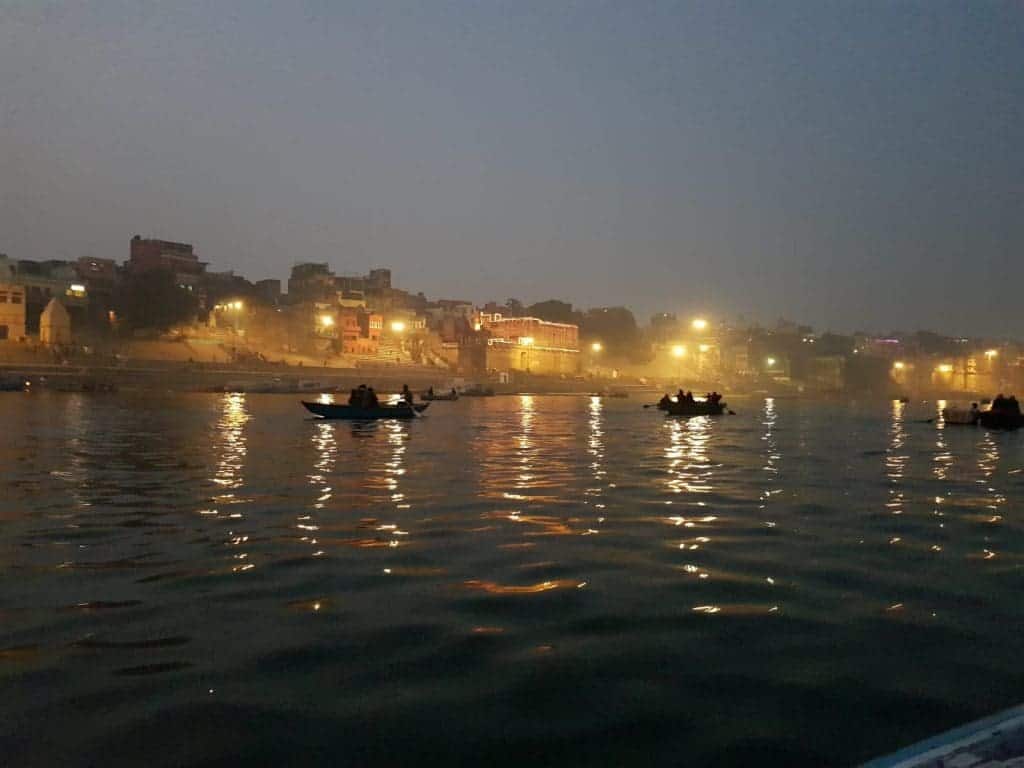
According to a legend, the ghat gets its name from an incident where Goddess Durga, after defeating the demons Shumbha and Nishumbha, discarded her sword into a river, which became known as Assi. The evening ‘arti’ draws visitors daily, but the ghat becomes particularly crowded during the months of Chaitya (March/April) and Magh (January/February), as well as on significant occasions like lunar/solar eclipses, Makar Sankranti, and Probodhoni Ekadashi.
The Ambience: A Blend of the Sacred and the Mundane
Varanasi’s ambience is an eclectic mix of the sacred and the mundane. The narrow lanes, lined with shops selling religious paraphernalia, sweets, and silk, lead to sprawling Ghats and grand temples. The air is filled with the sounds of temple bells, chants, and the everyday hustle of the city.
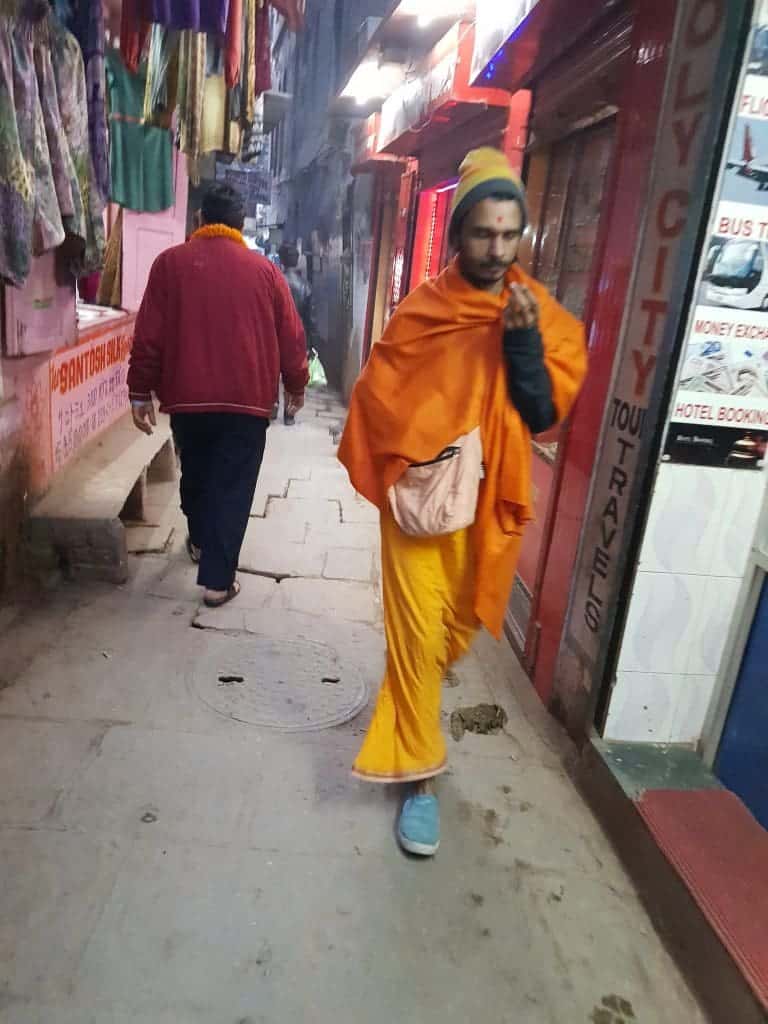
In the early mornings, the Ghats come alive with pilgrims performing rituals and taking holy dips in the Ganges. The evenings are marked by the spectacular Ganga Aarti, an elaborate fire ceremony that fills the atmosphere with a sense of divinity.
The Pilgrim’s Journey
For every visitor, Varanasi is a pilgrim’s journey. It’s not just about visiting a place; it’s about experiencing a transformation. The city compels you to introspect, to delve into the depths of your own belief and spirituality.
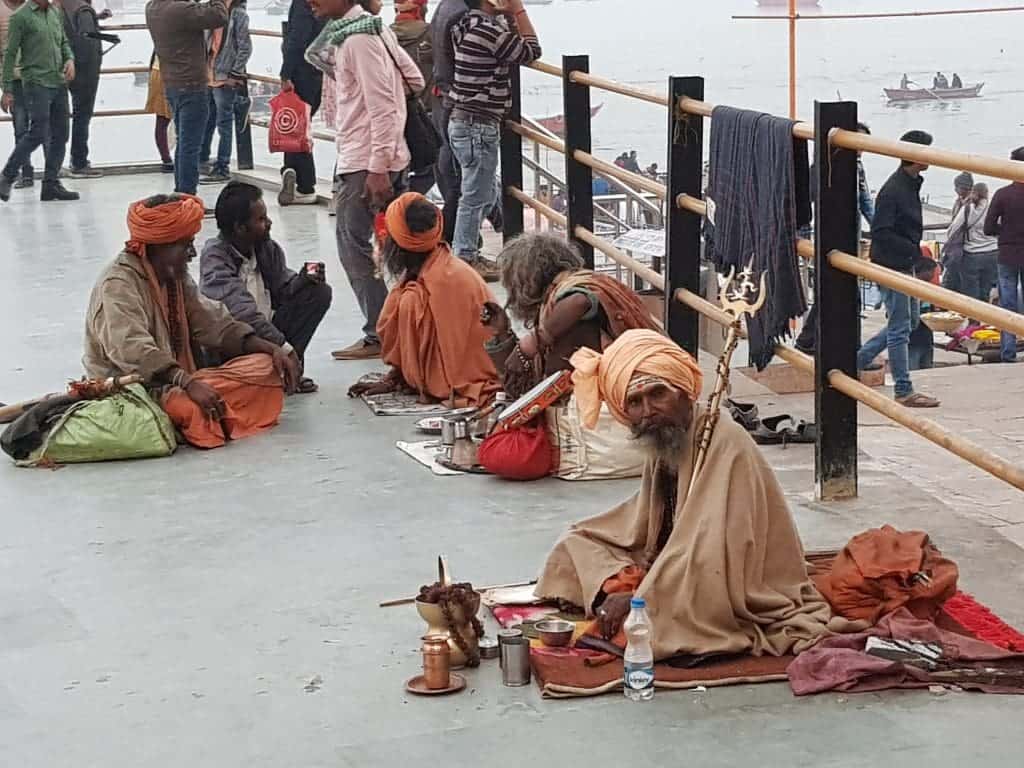
Boat Rides on the Ganges: A boat ride at dawn, when the first rays of the sun light up the Ghats and the river, is an ethereal experience. It offers a panoramic view of the Ghats and the myriad activities that define the city.
Walking Tours: The best way to experience Varanasi is on foot. Walking through the winding lanes, you’ll come across hidden shrines, ancient buildings, and the real culture of the city.
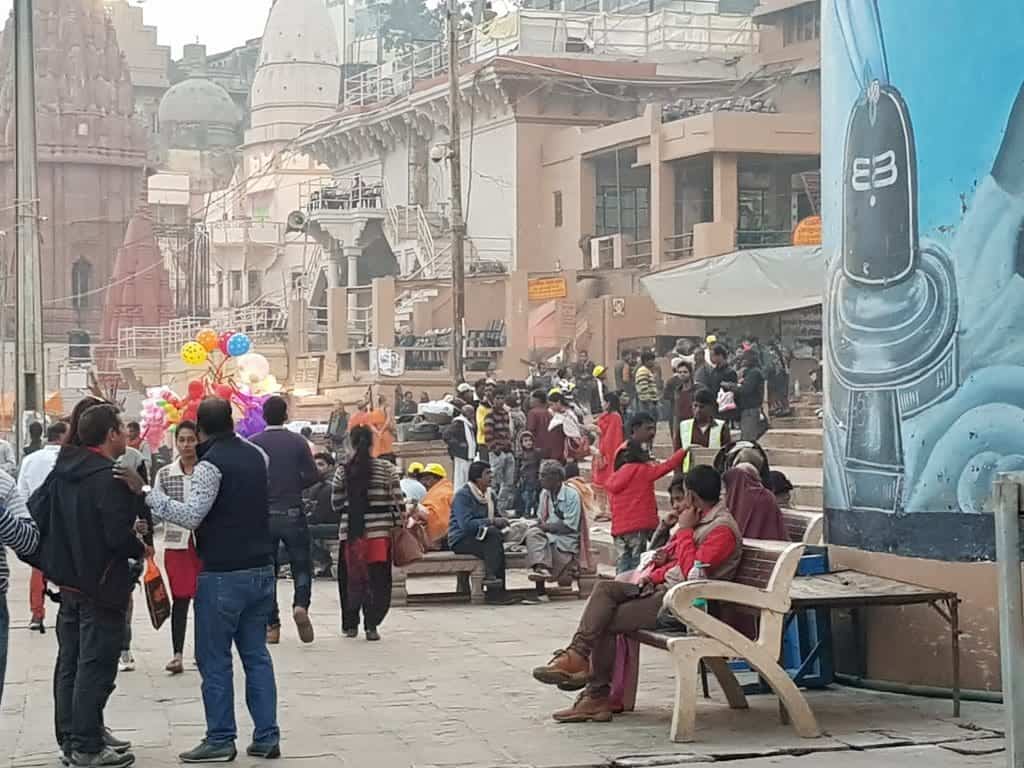
Culinary Journey: Varanasi’s street food, especially its sweets and chaats, is an integral part of the sacred Varanasi tour. The flavours and aromas are as much a part of the city’s character as its temples and Ghats.
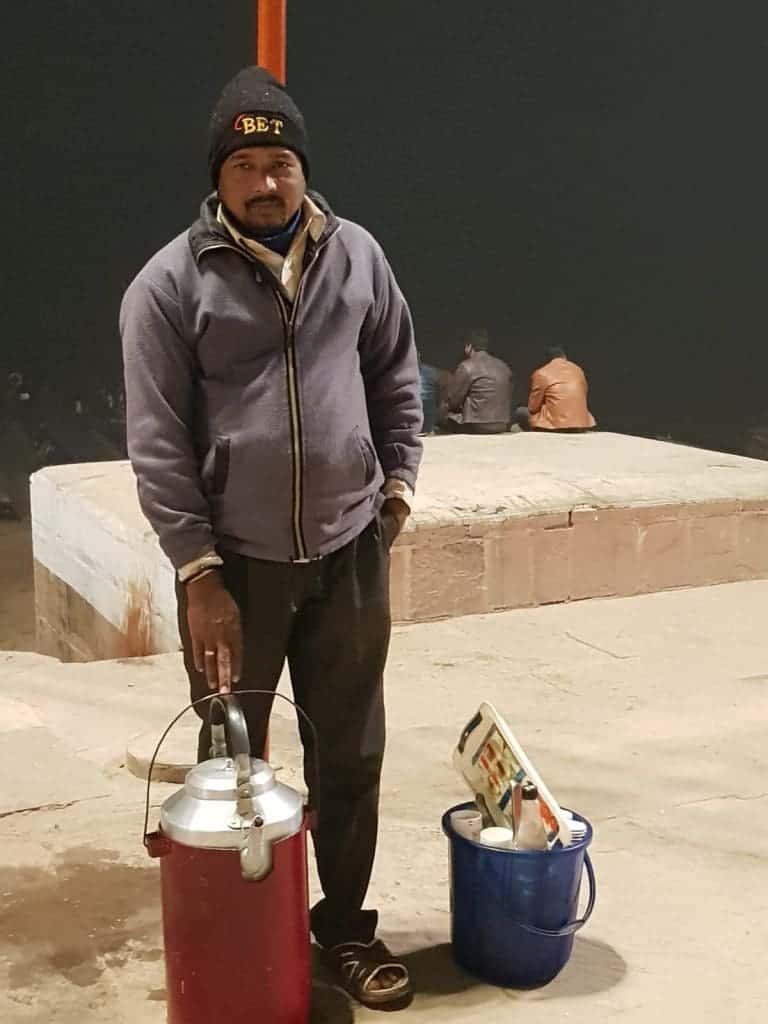
A Lasting Impression
The city of Varanasi, one of the holiest of the seven sacred cities, with its chaos and serenity, its timeless rituals, and its spiritual aura, leaves a lasting impression on every visitor. Each person’s journey through one of the most sacred cities in Hinduism is unique, yet universally, it’s a journey of self-discovery, of confronting life’s ultimate truths, and of finding peace amidst the ephemeral world.
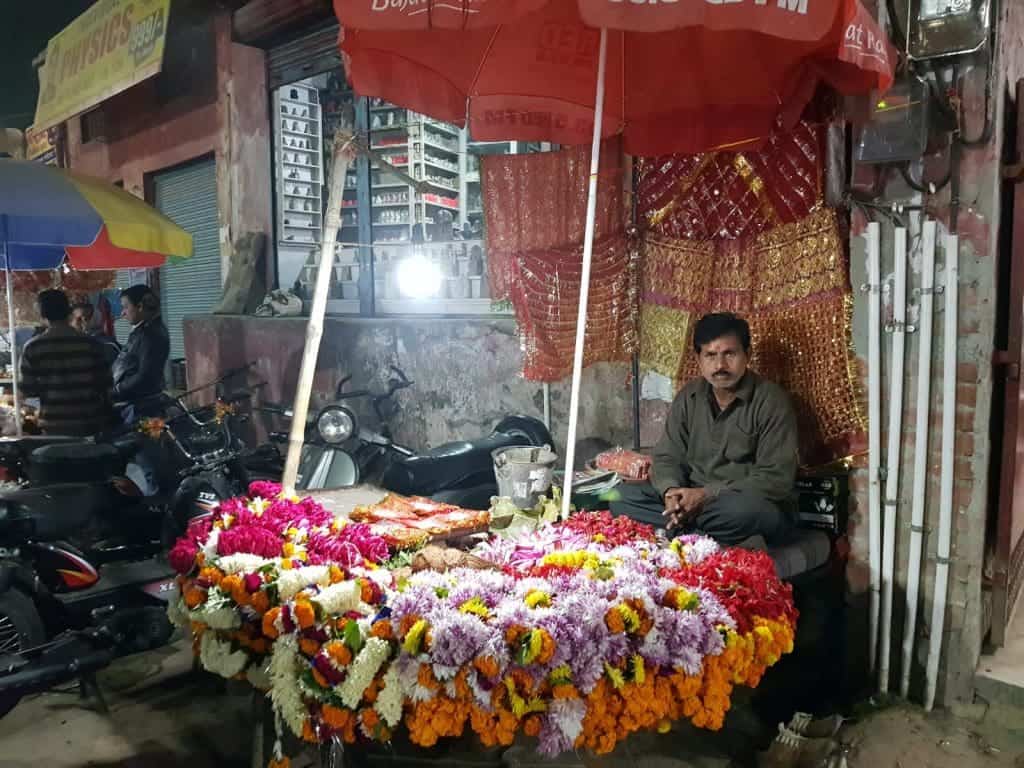
In the end, Varanasi is more than a city; it’s a testament to India’s unbroken spiritual heritage, a beacon for seekers of truth, and a mirror reflecting the myriad facets of human existence. It’s a destination that doesn’t just offer sights to behold, but experiences that linger in the soul long after the journey is over.
Read More: Latest



